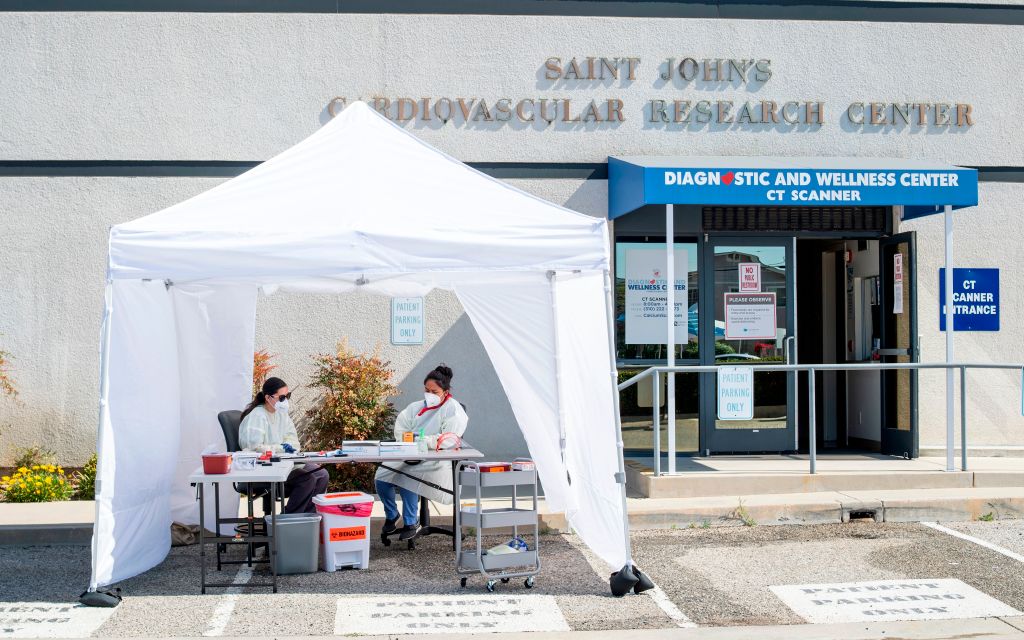
With solid data in short supply relating to the characteristics and spread of COVID-19, many governments and health officials are struggling to formulate suitable health and economic policies. As a consequence, some although not all, countries are effectively waging a war against the coronavirus based on the dynamics of a game of chance. This in turn is producing considerable anxiety about when lockdowns might end and the first steps towards economic activity might begin to occur.
This absence of data and resultant lack of concrete purpose is perhaps best illustrated in the U.S. where the federal government has left individual states to decide when to reopen in phases, without clarity on how widespread COVID-19 actually is. What state governments should be doing is formulating a reopening procedure that is based on selecting and testing a representative sample of the population.
There is now abundant evidence that asymptomatic individuals are the key diffusers of COVID-19 and as such firmly locating those individuals is the only way to stop further waves of contagion. Testing has always been of paramount importance, but this should not be seen as a mandate to test on a massive scale. That option is clearly not practicable and should urgently be substituted for well-designed testing strategies that determine the rate of infection in the local communities of individuals being tested, as well offering a firmer bearing on the general prevalence and diffusion of the virus within the greater population. Based on this information, contact tracing and smart containment strategies can be designed in order to ensure that contagion curve is kept flat and the health system can operate within its capacity.
COVID-19 has shown it can infect people regardless of age, race, gender, and geography, and therefore has proved unpredictable and difficult to contain. This unpredictability has been mirrored by the divergent testing strategies of different governments around the world. Countries such as Italy, U.K., and the U.S. have principally been testing patients with severe symptoms and have largely withheld testing asymptomatic individuals. By contrast, in countries such as Germany, Iceland and South Korea, the testing regimen has quickly expanded to mildly symptomatic cases, and to asymptomatic individuals who work in jobs where, should the become infected, have a high chance of spreading the virus to many others. That includes, for example, medical staff and workers in transportation hubs.
These different approaches may have been dictated by different logistical constraints, yet it is clear those countries that have employed intelligent testing and contact tracing strategies have in turn been more successful in containing COVID-19. For example, Iceland, South Korea, Australia, and Singapore all have strong testing and contact tracing initiatives and their infection and mortality numbers are a fraction of the U.S.’s.
A key piece of the exit strategy for countries like the U.S., Italy, and the U.K., then, seems simple: develop a serological testing program on a representative sample of the population, while also gathering information on demographic characteristics such as age, gender, number of children, type of working sector, skills, social and working associations.
Serological tests detect the presence of antibodies for COVID-19 and make sense for this purpose for a few reasons. PCR tests, which detect RNA evidence of a virus, can only reveal a current or recent infection. Antibody tests, on the other hand, can, in theory, identify someone who was exposed to the virus months ago. By testing with this method, governments will be able to capture a clear picture to what extent the virus has already spread and identify trends across geographical regions as well as across individual characteristics such as age, gender, working sectors and skills.
Gathering this representative sample would be relatively easy and cost-effective to implement. It is also easy because countries can use representative samples of the population that are regularly used for socio-economic surveys. For example, the U.S. Bureau of Labor Statistics’ “Labor Force Statistics from the Current Population Survey” could be adapted to run such tests. Secondly, the data collected can be analyzed though standard statistical methods, which will help to infer a body of valuable analysis related to the spread across the wider population.
There are aspects of the design of such test programs that will need to be very carefully managed. For example, they could be vulnerable to outcomes that wrongly indicate the presence of COVID-19 in a given region, or, conversely, identify regions that notionally suggest low infection rates. In both examples, test validation is critical.
Through the collection and statistical analysis of such data, governments will be in a position to make an informed choice and evaluate the advantages and the disadvantages that are inherent in any policy that will relax social distancing before a vaccine is available. Formulating an exit strategy without this information amounts to flipping a coin—the proverbial game of chance.
More Must-Reads from TIME
- Cybersecurity Experts Are Sounding the Alarm on DOGE
- Meet the 2025 Women of the Year
- The Harsh Truth About Disability Inclusion
- Why Do More Young Adults Have Cancer?
- Colman Domingo Leads With Radical Love
- How to Get Better at Doing Things Alone
- Michelle Zauner Stares Down the Darkness
Contact us at letters@time.com